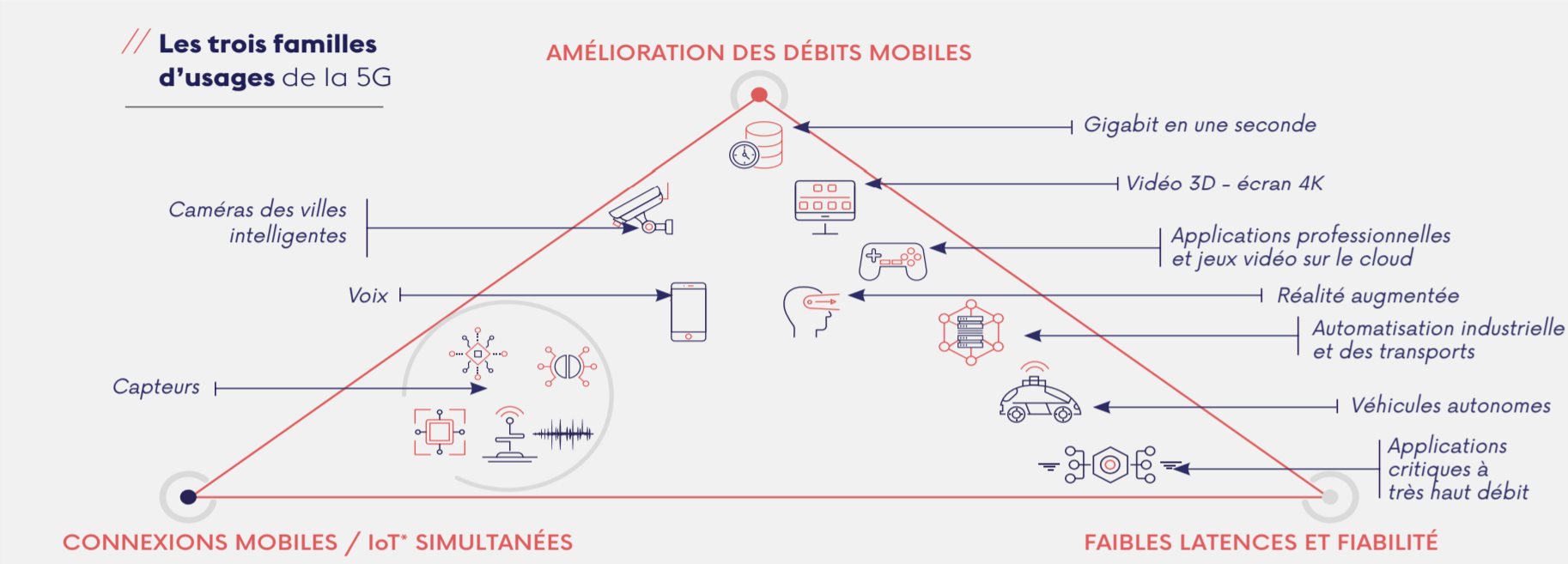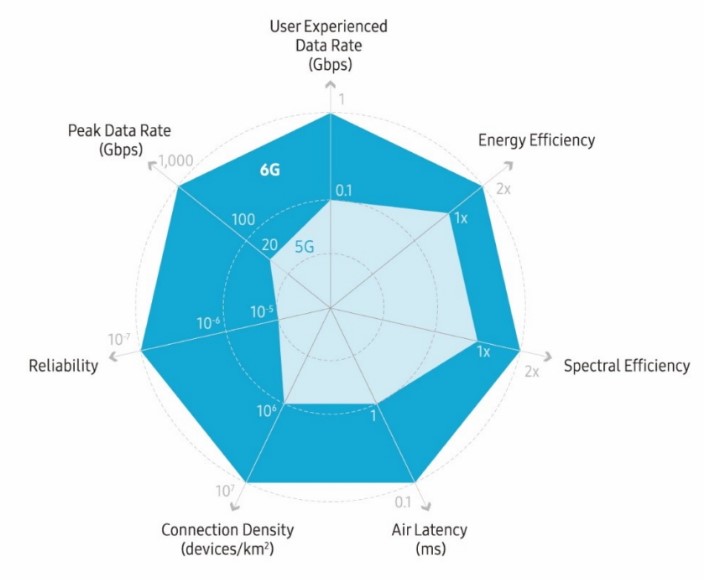While 5G is flourishing in many countries around the globe, research into 6G is already underway. In this article, we detail the technical and technological aspects of these wireless connections and their uses.
Summary
A look back at the 5G
5G is causing debate, but above all, it is beginning to establish itself in Europe. French operators are already proposing 5G packages. In Belgium, Proximus has published a map of the areas covered by 5G. What does this mean in concrete terms?
5G: technological point
In a nutshell, 5G is based on the use of millimetre waves. Their wavelength implies that 5G is much more efficient than 4G. However, their range is significantly reduced (between 24 GHz and 30 GHz). Many operators have integrated different 5G rates with the 5G sub-6, which offers a greater range of waves for a rate that is undeniably reduced (but still higher than that of the 4G LTE).
5G devices should be equipped with Dynamic Spectrum Switching (DSS) which will allow users to switch from 5G to 4G with ease. Indeed, 5G coverage remains limited at this stage.
5G is faster than some private WIFI connections.
5G: uses and purposes
The 5G offers users the ability to instantly share any data, drastically reducing loading time and the latency of connected objects and devices. Thus, it can be estimated that this technology makes it possible to manage a more significant number of connected objects, to make them act while increasing the speed of data exchange.
THE 5G compared to the 4G
- Increased flows
- Increase in the number of connected devices and sensors
- Latency reduction
- Increased speed and size of downloads
- Increase in live and streaming
- Quality of video content viewed
- Expected growth of cloud gaming
- Real-time applications (augmented reality, telemedicine, and so on)

5G: flat-rate options (France)
Nice was the first French city covered by the SFR network. The first cities with access to this network by the end of 2020 in France are those that have participated in the preliminary tests. Coverage of significant cities should, therefore, be achieved soon.
French operators are already on all fronts with flourishing offers:
- At Orange, for 70 GB compatible with 5G, the mobile package will be €14.99/month for the first year and then €29.99/month.
- Bouygues customers will pay €16.99/month for the first year and then €25.99/month for a 70 GB package.
- B&You (Bouygues) is the first low-cost operator to propose a 5G package with 130 GB of data in 4G and 5G for €24.99/month (under certain conditions).
- SFR does not propose a discount when changing packages: customers will be billed €21/month for a 5G package of 140 GB for the first 12 months, and then €33/month.
- As for Free, their only 5G package includes 210GB of data for €19.99/month.
Overview of the 6G
It is a fact that work on 6G has already begun. Samsung has already issued a press release on its vision for the 6G. The research is not likely to be completed before 2030 and will serve the world of tomorrow.
Technical and technological announcements
The technological objectives of the 6G will be: always more speed and performance and still less latency.
The first communications from research companies indicate a desire to move to a speed that would make it possible to multiply the number of devices used by 10, network reliability by 100 and to download a hundred hours of Netflix in the blink of an eye.
To do this, the technology would have to operate on even more narrow waves than 5G and therefore be even more easily jammed. The question of access to these bands will therefore be one of the critical research issues. Go to this video to find out more.

Questions arise around the use of artificial intelligence, to allow devices to not only receive but also transmit 6G…
Intended uses
Today it is complex to imagine needing more than 5G, or even for some people 4G. However, the aim is to meet tomorrow’s needs. As for knowing which ones? Hypotheses are going well between the progression of the use of virtual reality, the significant advances around augmented reality, hologram technologies, autonomous cars, and undoubtedly other as yet unknown technologies…
Autonomous cars and the 6G
We talked about different aspects related to autonomous cars (consumer perception and media impact). However, from a technical and technological point of view, it is suggested that 5G bands will not be sufficient to ensure safe travel for the majority of consumers in their future autonomous car. 5G is not fast enough, not reliable enough and does not, to date, provide sufficient quality, responsiveness, analysis or reliability for user safety.
Conclusion
We are only at the beginning of 5G access for the general public while manufacturers and researchers are already working on the development of 6G to anticipate future needs and allow future technologies to be developed in the best possible conditions.
We will certainly come back to these subjects in the course of the innovations.
Posted in Innovation.


